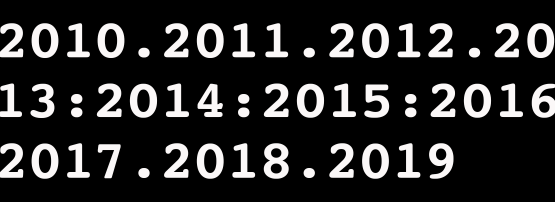
Being a new year, and a new decade (depending on when you count a decade), we thought it’d be fun to look back at the last ten years to see how Internet number resourcing has changed, or in some cases, remains the same.
The 2010s finished as they started, with IPv4 exhaustion still a hot topic within the Internet community.
A year into the previous decade, IANA allocated its last five /8s — one to each of the Regional Internet Registries (RIRs). These ‘final’ address pools have been delegated by the RIRs following the policies proposed by their communities; all of which have varied and, as such, led to some RIRs totally exhausting their available IPv4 resources (RIPE NCC and ARIN), while others (AFRINIC, APNIC and LACNIC) still have some left for new Members (Figure 1).
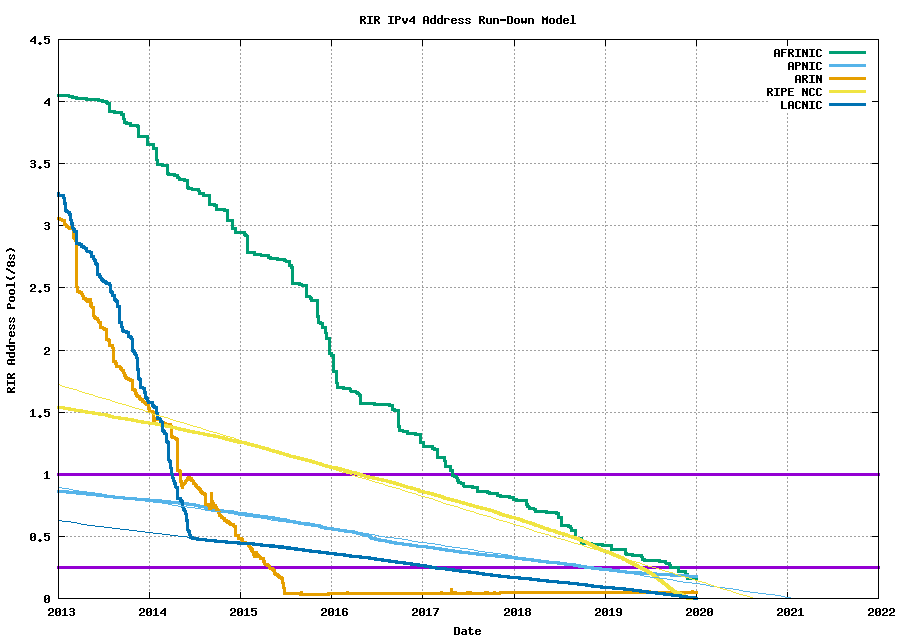
APNIC started delegating from its final /8 in April 2011. According to its final /8 policy, each APNIC account holder could receive up to a /22 from the final /8 pool (103/8).
Read: Ensuring newcomers can connect to a dual-stack Internet
This is the reason why the delegation size of IPv4 dropped significantly from 2011 onwards (Figure 2).
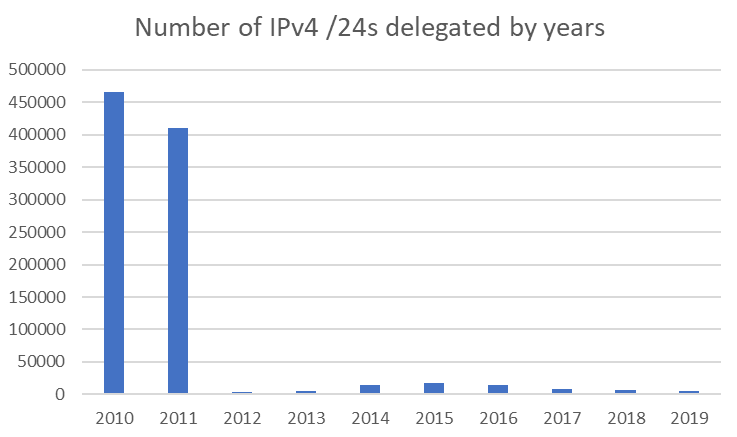
Three years later a new policy proposal ‘Distribution of returned IPv4 address blocks’ was implemented, which allowed each APNIC account holder to apply for an additional /22 from the IPv4 recovered pool. This explains the slight increase in IPv4 delegations between 2014 to 2016 but was quickly exhausted by 2016 after which time APNIC created a waiting list for unmet requests from this non-103/8 pool.
In 2019, a new policy proposal ‘Abolish waiting list for unmet IPv4 requests’ was implemented, doing away with the waiting list; all future recovered IPv4 space is now added to the final /8 pool.
Last year also saw the maximum allocation size from the final /8 pool being reduced from a /22 to a /23.
IPv4 transfers
As IPv4 addresses became harder to get from the RIRs, more and more people turned to the transfer market to meet their needs.
Policy proposal prop-050: IPv4 address transfers was implemented in February 2010 to allow IPv4 transfers between APNIC Members. A year later, policy proposal prop-095: Inter-RIR IPv4 address transfer proposal was implemented to allow IPv4 transfers between APNIC Members and organizations in any other RIR region with a compatible policy.
These policies, and subsequent exhaustion events have seen transfers increase significantly year-on-year over the last decade; more than one /8 in total has been transferred from the ARIN region to the APNIC region alone.
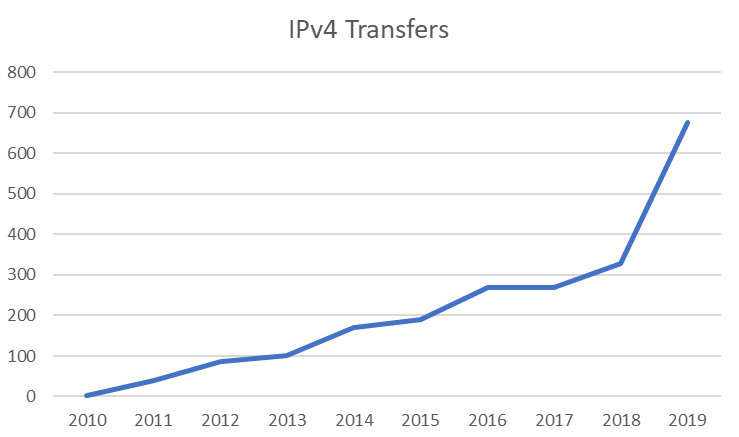
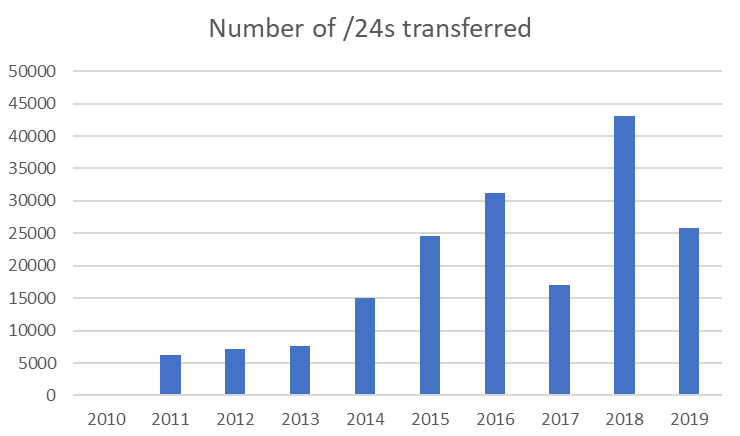
IPv6 use is improving
It was expected the majority of the Internet would be using IPv6 by 2020. Alas this didn’t turn out to be the case, even though it has made great strides in the last few years as it reached 30%.
APNIC started making IPv6 delegations in 1999. In the recent 10-year period, we can see three significant jumps in delegation in 2011, 2018 and 2019, most of which can be attributed to extra-large delegations to China.
By the end of 2019, more than 64% of APNIC’s Members received IPv6 addresses.
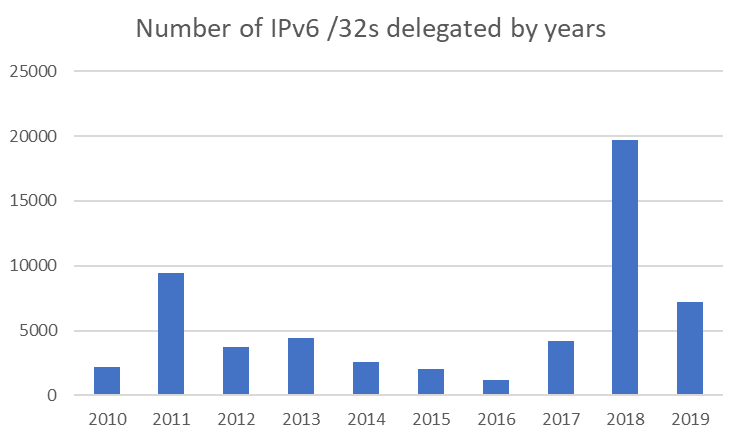

From two-byte to four-byte ASN
The highlight of ASN delegations over the past 10 years was the implementation and acceptance of 4-byte ASNs (Figure 6). Like IPv4, 2-byte ASNs became exhausted and required a successor to supplement the increasing demand by networks wanting to connect to more than one AS with different routing policies.
Read: Seamless transition down to effective collaboration
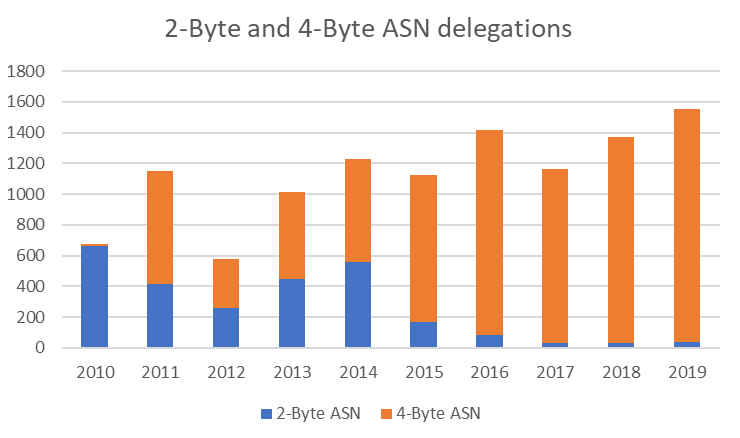
Membership growth
While Internet number resourcing has fluctuated over the last ten years, membership growth has remained a constant, with the greatest growth recorded in emerging economies that are starting to develop their Internet infrastructure, led by Bangladesh, Thailand, Myanmar and Mongolia.
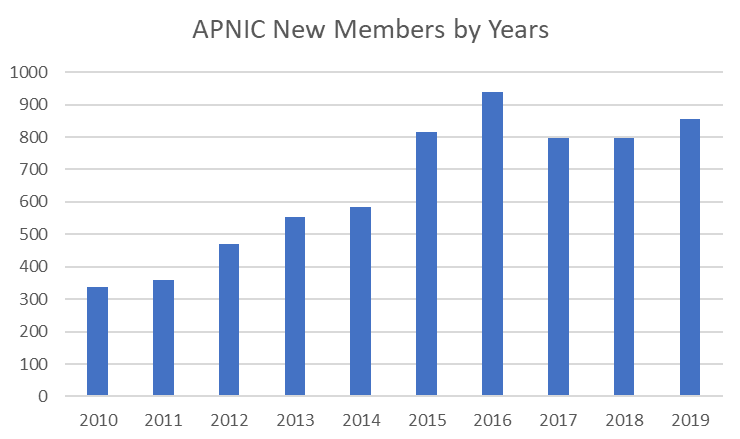
What’s in store for the next 10 years?
Although we wrongly predicted that available IPv4 would be completely exhausted from the RIR pools by 2020 we can pretty safely say — especially following the exhaustion event in the RIPE region — that it will in the coming years. At the time of writing, around 18% of APNIC’s final /8 pool remains.
The surge in IPv4 transfers is expected to meet demand over the next few years, however, this will be painful for those still relying solely on IPv4, with the cost of addresses expected to increase further from what they currently sell for on the market.
As such, IPv6 adoption is expected to continue to increase, and if the trend continues, the majority of Internet content will be accessible by IPv6 in the next 10 years.
The views expressed by the authors of this blog are their own and do not necessarily reflect the views of APNIC. Please note a Code of Conduct applies to this blog.
